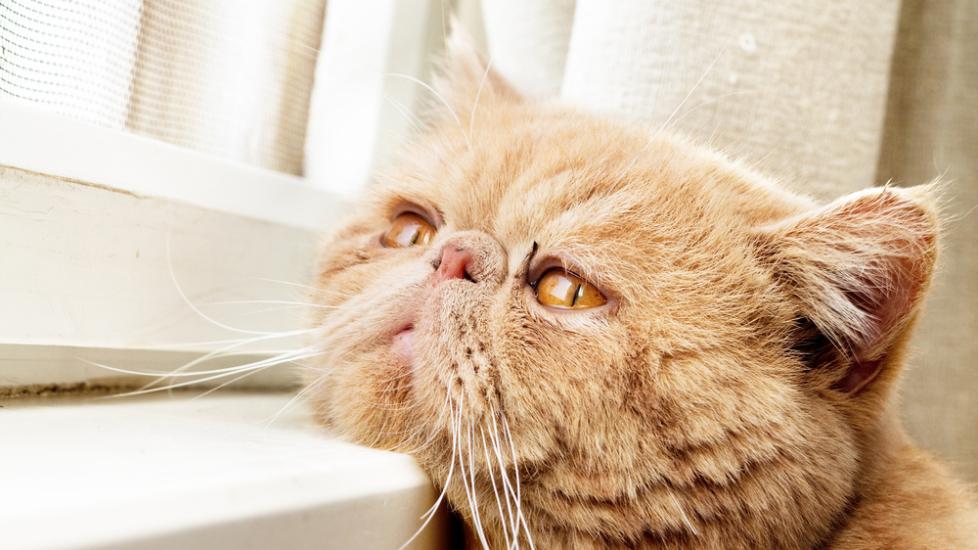Bleeding of the Retina in the Eye in Cats
Retinal Hemorrhage in Cats
Retinal hemorrhage is a condition of the innermost lining of the eye in which there is a local or generalized area of bleeding into that lining. This inner lining is referred to as the retina. The retina lays just beneath the middle choroid coat, which in turn lies between the retina and the sclera – the white outer lining of the eye (the part of the eye that can be seen). The choroid coat contains connective tissue and blood vessels, which deliver nutrients and oxygen to the outer layers of the retina. In some cases the retina may separate from this layer. This is termed retinal detachment. The causes of retinal hemorrhage are usually genetic and breed specific.
Symptoms and Types
- Vision loss / blindness, demonstrated by bumping into objects
- Bleeding in other body parts – small bruises throughout the body
- Blood in urine, feces
- Whitish-appearing pupil
- Pupil may not contract when bright light is shone in the eyes
- Sometimes, no signs may be observed
Causes
Genetic (present at birth):
- Faulty development of the retina or the lubricating fluids of the eyes (vitreous humor)
Acquired (condition that develops sometime later in life/after birth):
- Trauma/injury
- Generalized (systemic) high blood pressure (hypertension), especially in old cats
- Kidney disease, heart disease
- Increased levels of thyroid hormones
- Increased levels of some steroids
- Exposure to some chemicals, such as paracetemol
- Some fungal and bacterial infections
- Some forms of cancer
- Blood disorders – blood-clotting disorders, anemia, hyperviscosity of blood, etc.
- Diabetes
- Inflammation of blood vessels
- Older cats with high blood pressure may also develop hemorrhage or detachment of the retina
Diagnosis
Your veterinarian will perform a complete physical exam on your cat. You will need to give your veterinarian a thorough history of your cat’s health, onset of symptoms, and possible incidents that might have led to this condition. Standard laboratory tests include a blood chemical profile, a complete blood count, an electrolyte panel, a blood pressure test and a urinalysis, so as to rule out other causes of disease.
The physical exam will entail a full ophthalmic exam using a slit lamp microscope. During this exam, the retina at the back of the eye will be closely observed for abnormalities. The electrical activity of the retina will also be measured. An ultrasound of the eye may also be done if the retina cannot be visualized due to hemorrhaging. Samples of vitreous humor (eye fluid) may be taken for laboratory analysis.
Treatment
Patients with retinal hemorrhage are usually hospitalized and given close care by a veterinary ophthalmologist. Your veterinarian will prescribe medications depending on the underlying cause of the disease. Surgery can sometimes be performed to reattach the retina to the choroid coat.
Living and Management
Your veterinarian will schedule frequent follow-up appointments for your cat to chart the deterioration or progress (post-surgically) of the retina and the underlying disease that caused it to detach. Repeat bloodwork and ophthalmic exams will be performed during these visits. If your cat becomes blind as a result of the retinal detachment, remember that once the underlying cause of disease has been controlled, the eye will no longer be painful to your cat. Although the blindness may not be reversed, your cat can still lead a happy and fulfilling life indoors as it learns to compensate with its other senses and memorizes the layout of the home.
As your cat will be more vulnerable without its sight, you will need to take extra care to protect your cat from harmful situations, such as with other pets and active children. Also, you will need to keep your cat indoors at all times.
